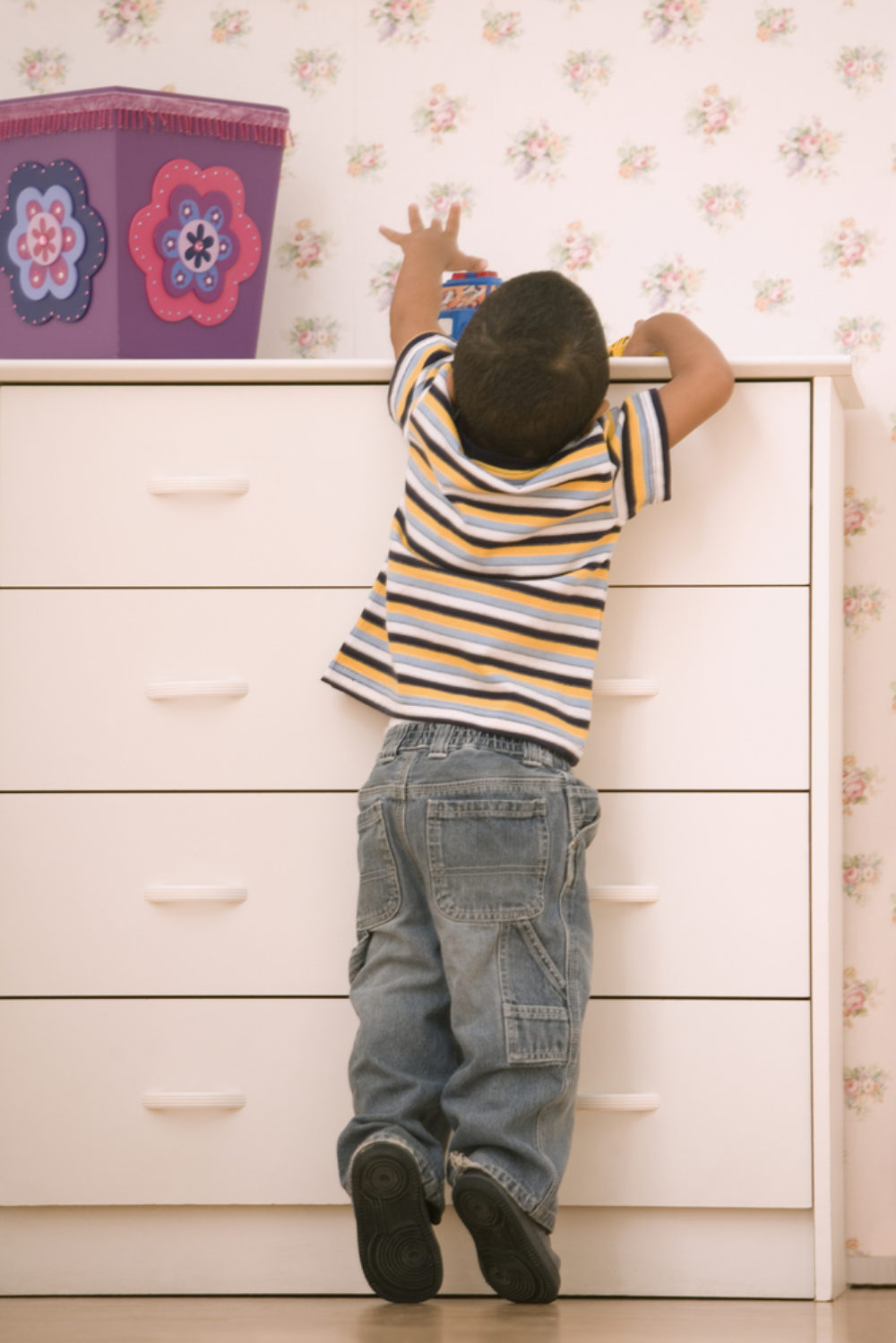CPSC Issues New Warning On Furniture Tip-Over Risks To Children During COVID Lockdown, Superbowl

Federal safety officials have issued a new report about the risks associated with furniture tip-over accidents, and are warning consumers about problems that have occurred during the COVID-19 pandemic lockdowns, as well as issues that may occur around the upcoming Superbowl.
The U.S. Consumer Product Safety Commission (CPSC) released the furniture tip-over warning on January 28, emphasizing the importance of properly anchoring furniture such as dressers, televisions and bookcases to the wall by using affordable anti-tip kits to protect their children.
Furniture tip-over accidents are among the top hidden hazards in the home and can leave children at risk of becoming trapped or crushed by an unstable and unanchored piece of furniture, sending more than 11,000 children to hospital emergency rooms between 2017 and 2019, with 79% of all injuries involving children younger than six years of age crushed under the heavy furniture.

Did You Know?
Change Healthcare Data Breach Impacts Millions of Customers
A massive Change Healthcare data breach exposed the names, social security numbers, medical and personal information of potentially 100 million Americans, which have now been released on the dark web. Lawsuits are being pursued to obtain financial compensation.
Learn MoreThe statement points out that at least 451 children were killed between 2000 and 2019, with 75% of incidents involving an unanchored television falling on the child.
For almost a year, children across the U.S. have been on lockdown for nearly a year, giving them more opportunities to accidentally tip over televisions and other furniture due to confinement at home and restlessness. Now, as millions plan to watch the upcoming Superbowl at home, CPSC officials say it is the time to anchor all TVs to prevent severe and potentially life-threatening injuries to children.
Children six years old and younger are most susceptible to tip-over accidents, due to their height and propensity to try to climb on a TV stand or dresser to reach remotes, gaming equipment, or toys.
The severity of injuries that come from tip-over accidents vary from minor scratches and bruising to death. The CPSC data indicates the majority of the accidents result in some sort of injury to the head or neck due to children reaching up on dressers and TV stands. Official’s recommends parents never leave remotes on dressers or anything which would entice a child to reach upward and pose a tip-over hazard.
Officials provided real-life footage of several scenarios in which unanchored furniture tipped over on children while parents were present. Acting CPSC Chairman, Robert Adler, stated in the release “these tip-overs happen so fast; it’s literally in the blink of an eye, often with a parent close by.”
Since 2015 the CPSC has run an “Anchor It!” campaign, which is designed to raise awareness among parents and caregivers about the dangers of unsecured TVs and large pieces of furniture tipping over, causing severe and potentially life-threatening injuries for children. The campaigns were launched after a series of furniture tip-over recalls were issued for millions of dressers prone to falling over.
The agency has also performed several survey’s to determine whether parents are heeding the warnings to anchor furniture, which has found many who did not anchor dressers or televisions believed it was not necessary as long as the children were being watched, which far too often proves false, according to the agency.
Currently, there are no mandatory standards which furniture manufacturers must follow when designing furniture to help prevent them from tipping over, only recommended safety standards.
The voluntary standards encourage manufacturers to design dressers and other pieces of furniture measuring over 30 inches tall to be able to withstand holding 50 pounds on each dresser drawer when it is extended without tipping over, however Consumer Reports claims this recommended tip-over weight does not represent the actual weight of the children who are most hurt by tip-over incidents.





0 Comments